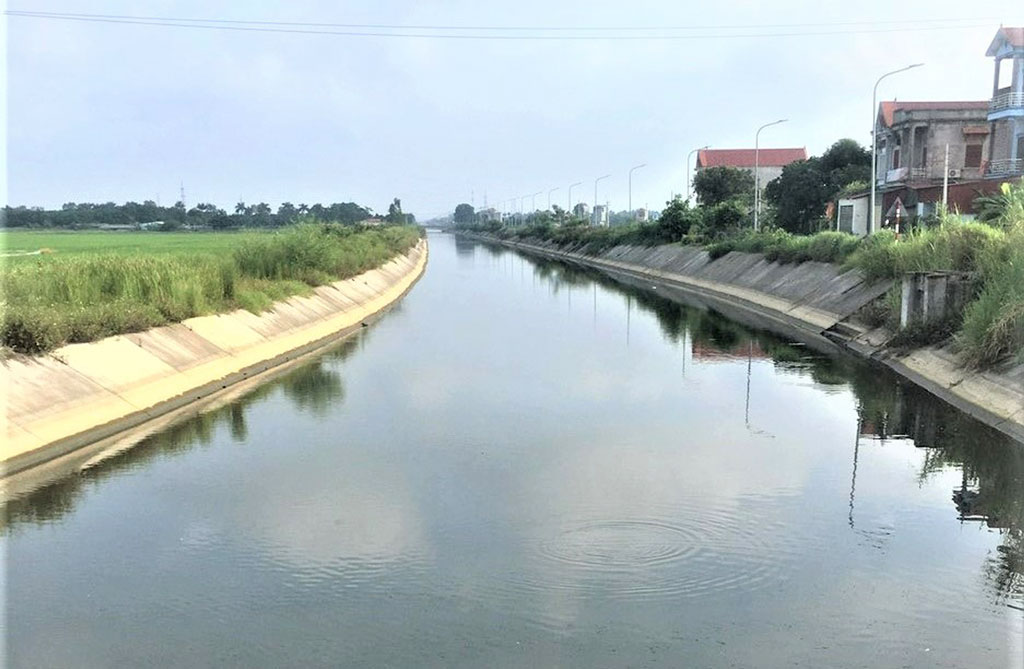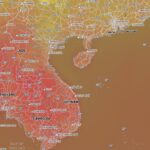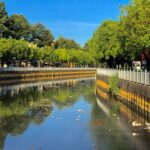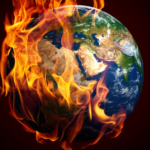In Bac Ninh province, the Bac Hung Hai irrigation system plays a very important role in agricultural production, but the water source is polluted.
Bac Hung Hai irrigation system is located in the middle of the Northern Delta, surrounded by 4 Duong rivers, Luoc rivers, Red rivers and Thai Binh rivers, responsible for irrigation and drainage for agricultural production of Hung Yen and Hai Phong provinces. Duong, Bac Ninh and Hanoi city.
Status
In Bac Ninh province, the Bac Hung Hai irrigation system flows through Thuan Thanh town, Gia Binh and Luong Tai districts, including Dong Coi river, Bui river, Dong Khoi river, Dai Quang Binh river, Ngu river, Dau River and irrigation canals such as: Giua Canal, Bac Canal, Vang Canal. This system plays a very important role in agricultural production, but the water source is polluted.

According to the assessment of the Department of Natural Resources and Environment: Currently there are 205 organizations and individuals discharging water into the Bac Hung Hai system. Including Thuan Thanh town, there are 109 organizations and individuals; Luong Tai district has 52 organizations and individuals and Gia Binh district has 44 organizations and individuals. From 2022 to present, the Department of Natural Resources and Environment, Provincial Police, Department of Agriculture and Rural Development, districts and towns of Gia Binh, Luong Tai, and Thuan Thanh have inspected 200 organizations and individuals that discharge waste into the system. Bac Hung Hai irrigation system: Required 16 facilities to stop operating; 117 establishments were sanctioned for administrative violations in the field of environment, with a total fine of more than 3.7 billion VND.
Causes of pollution in Bac Hung Hai irrigation system
- Because the industrial clusters in the above localities do not have synchronous infrastructure;
- Many businesses that sublease land and sublease units do not have environmental records according to regulations, causing difficulties in management, especially measures to treat waste generated by each business during the process. manufacture; The amount of water discharged directly and indirectly into the Bac Hung Hai irrigation system is mainly domestic wastewater from urban areas, residential areas, industrial clusters and some craft villages that has not been treated and has been deposited for a long time, leading to organic pollution;
- The awareness of compliance with laws on environmental protection of a part of businesses and production establishments is low, and they refuse to invest in environmental protection works... leading to increased risk of water pollution in the area. This.
The People's Committee of Bac Ninh province has implemented timely instructions
Faced with that reality, the Provincial People's Committee issued Document No. 83/BC-UBND reporting to the Government on the environmental pollution of the Bac Hung Hai irrigation system flowing through Bac Ninh area. At the same time, we request functional departments, branches, and local governments with river routes in the system to coordinate closely in strengthening inspection and supervision to strictly handle individuals, organizations arbitrarily dump untreated waste into the environment, affecting water sources; Require businesses to invest in wastewater treatment works to treat wastewater before discharging it into the environment;
It is necessary to adjust the operating procedures of water drainage works to minimize the impacts of water pollution, advising irrigation works operators and people about their responsibility to protect water sources according to the provisions of the Water Law. profit; Carry out dredging, clearing the flow, and collecting residual waste in the system; Regularly propagate and mobilize people to raise awareness of environmental protection and not discharge waste into rivers and canals; Urging the implementation of investment projects to build centralized wastewater treatment systems in districts and towns of Luong Tai, Gia Binh, Thuan Thanh to treat domestic wastewater, craft villages, industrial clusters... to minimize arising from water pollution.
Suggestions and proposals
Bac Ninh also proposed to ministries and central branches to soon develop regulations on the management and protection of water sources for the Bac Hung Hai irrigation system; unify the discharge mechanism into the Bac Hung Hai irrigation system; guide, conduct investigations, evaluate load bearing capacity and classify, build a database on waste sources on the Bac Hung Hai irrigation system; Proposing to renovate and upgrade the entire system to ensure the functions of irrigation, drainage, water regulation and effective operation of pumping stations to serve agricultural production.
Currently, Thuan Thanh town has 3 main rivers: Dau - Dau Dinh Du River, Dau Lang Tai River, Dong Coi Dai River, Quang Binh; Gia Binh district has 2 main routes: Ngu River and the North Canal, Dai Quang Binh Canal, level 1, 2, and inner-field canals; Luong Tai district has 9 main drainage rivers, about 56.5 km long and 5 main irrigation lines, about 35.75 km long, located in the Bac Hung Hai irrigation system. Most rivers and canals have been dredged, picked up waterweed and waste, cleared the flow, and are focusing on overcoming environmental pollution. Surely the Bac Hung Hai irrigation system will ensure source quality. water, effectively serving agricultural production and stabilizing people's lives.
Source:: https://www.moitruongvadothi.vn/
Information:
Email: info@ilotusland.com.
Hotline: +84 909 403 778
Facebook : iLotusLand – Dẫn đầu về Giải pháp IoT công nghiệp
Linked in: iLotusLand – Nền tảng IoT đầu tiên tại Việt Nam





